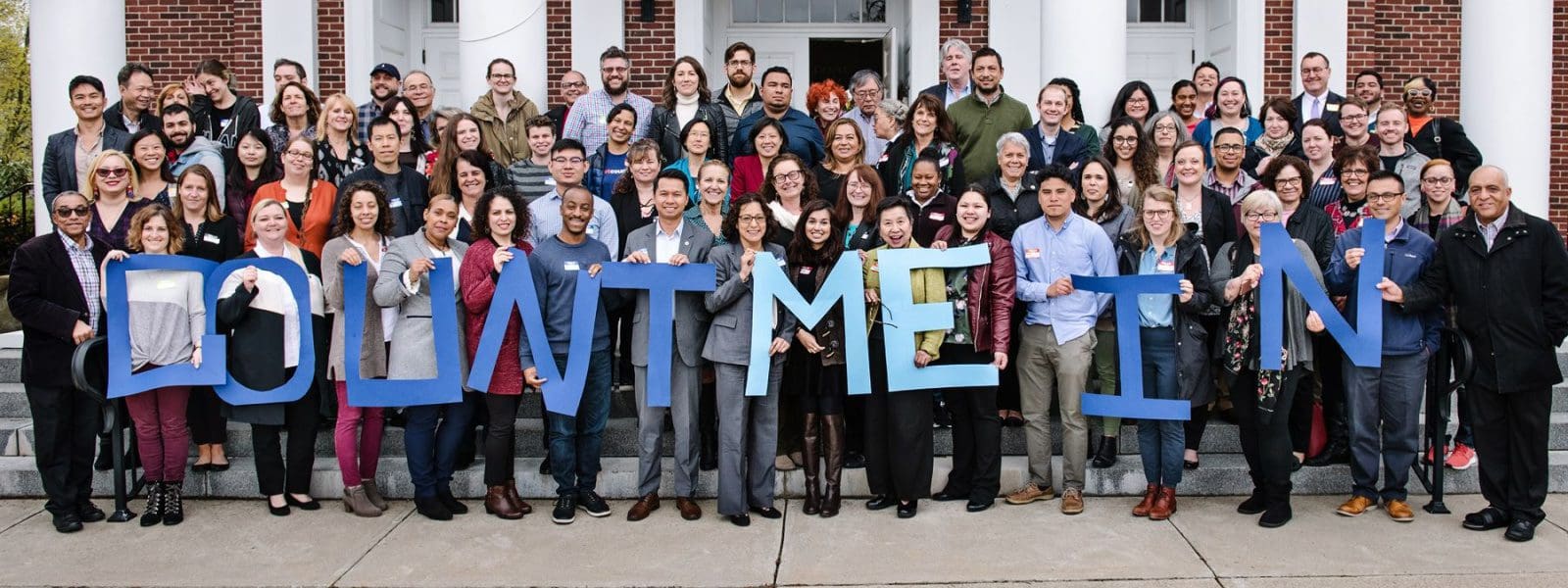When the Dream of Democracy Becomes a Reality for All
The 2020 U.S. election was shaped by a global pandemic, nationwide movements for racial justice, and unprecedented levels of civic participation nationwide. With so much at stake this year, it remains critical that all citizens’ voices are heard. Though the counting of ballots is ongoing, one fact remains abundantly clear: Democracy works best when all nonprofits, regardless of mission, make a concerted effort to expand fair and equal access in the communities we serve.
Early estimates confirm historically high levels of voter turnout, even among marginalized communities. This is thanks, in part, to years of hard work by nonprofits to provide staff members, volunteers, and constituents with the information they need to vote in an unpredictable election cycle. Estimates, so far, show voter turnout reached 66.4%, which indicates more citizens participated in the 2020 general election in over a century and voted by mail than in any other election in U.S. history.
This monumental shift can partially be attributed to the civic engagement efforts of nonprofits nationwide to ensure voters registered and turned out to vote. Nonpartisan voter education and advocacy campaigns, largely led by nonprofits, focused on more accessible voting procedures nationwide, particularly taking into account challenges related to the pandemic. Comprehensive data and analyses indicate that a total of 49,655,342 voters cast ballots early, with 12,005,195 voters opting to cast their ballots in person and 37,650,147 by mail, more than twice the number of votes cast early in 2016.
In our steadfast efforts to advance voter turnout among populations who face the greatest barriers to participation, nonprofit organizations made significant strides to protect the voting rights of individuals who are often excluded from democracy and the processes that follow. Such individuals include people who were purged from voter rolls, younger voters, people of color, returning citizens, and hard-to-reach populations. Research shows that nonprofits are 11 percentage points more likely to turn out new voters, particularly voters from marginalized and under-represented communities.
According to data from Tuft University’s Center for Information & Research on Civic Learning and Engagement, the youth vote (ages 18-29) in battleground states alone comprised 50-52% of the total vote, accounting for 14% of the vote in Pennsylvania, 15% of the vote in Michigan, 16% of the vote in North Carolina, 21% in Georgia, 14% in Wisconsin, and 17% in Arizona. While exit polls can slightly overestimate voter participation, polling data suggests that the 2020 election may show large gains among voters of color. Preliminary data provided by the American Election Eve Poll concluded that Latinx, Black Asian, Pacific Islander, and American Indian voters played a pivotal role in voter turnout in battleground states.
Democracy could not have prevailed without the public sector’s collective efforts. We applaud the hard work and dedication of the philanthropic and nonprofit organizations across the country who committed their time and resources to ensure voters had the information and tools needed to access the ballot box. Nonprofit advocacy does not end with the election. To ensure nonprofit issues are prioritized, we must build upon this momentum by mobilizing this historic number of voters to ensure that newly-elected officials are accountable to nonprofits and the communities we serve.



